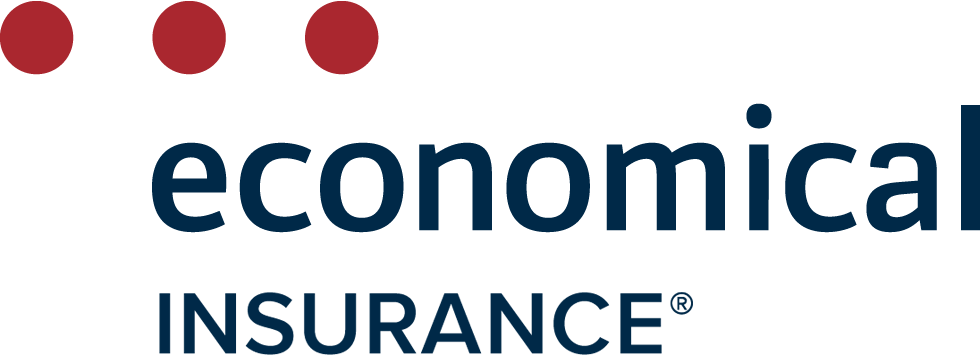
Get the Cheapest Brantford Car Insurance Quotes
Brantford drivers save $489* on average by comparing quotes on InsuranceHotline.com
Jump straight to:
- How Brantford auto insurance works
- How to get the cheapest Brantford car insurance quotes
- Mandatory and optional car insurance coverage in Brantford
- How much does car insurance in Brantford cost?
- Brantford car insurance rates by postal code
- Factors that influence your Brantford auto insurance premium
- What can I do to get cheaper car insurance in Brantford?
- Frequently asked questions about Brantford auto insurance
How to get the cheapest Brantford car insurance quotes
Get multiple car insurance quotes in the time it takes to get just one.
Enter Your Postal Code
Enter your postal code to begin.

Enter Driver Details
Tell us a little bit about your vehicle, driving & car insurance history.

Compare Your Quotes
Compare your car insurance quotes from more than 30 top insurance companies.

Pick Your Policy
Pick the insurance policy that's right for you to connect directly with the insurance professional of your choice.
We've got hundreds of 5 star reviews
2,247 reviews on TrustPilot. See some of the reviews here.
Fran
Curtis
Robert Clarkson
Vincenzina Perri
Keith
Dev
Georgia
Shirley Munro
Hoang Tran
Alnoor
Michael Benninger
Gene
D on
Robert
Remonia Thompson
Rich
Luis
How Brantford auto insurance works
First and most importantly, you must have auto insurance to drive a car legally in Brantford, Ontario. Here's what else is essential to know about Brantford auto insurance.
There's a minimum amount of insurance you must carry.
A standard auto insurance policy carriesthird-party liability coverage, statutory accident benefits, direct compensation property damage (DCPD), and uninsured automobile insurance. You can buy optional insurance coverage to broaden your coverage at extra cost, such as comprehensive and collision coverage.
Standard auto insurance includes provisions that pay to repair or replace your car and provide compensation for temporary modes of transportation (under DCPD), but you can only access these if you weren't responsible for the damage. Optional insurance coverages would cover you even if you were at fault.
Ontario drivers can only buy insurance from private companies, but the provincial government regulates prices.
While many provinces have public insurance, drivers must buy insurance from private companies in Ontario.
You can purchase insurance from brokers, agents representing an insurance company, or directly from a provider without the help of an agent (these are known as direct writers).
You only need to contact your own insurance company after you've been in an accident with another vehicle.
Ontario operates under a 'no-fault' system. After a collision, each driver deals with their respective insurance company, regardless of who is at fault in the accident. Beyond sharing insurance information in the immediate aftermath, you shouldn't interact with the other person's insurance company — your insurer will handle it for you.
Changes to Ontario auto insurance: 2024 reforms
Drivers will have the option to remove currently mandatory accident benefits from their auto insurance policy within the next two years, according to the 2024 Ontario budget. Here's what that will look like:
- Coverage that will become optional are the caregiver benefit, housekeeping and home maintenance expenses benefit, income replacement benefit, and death and funeral benefits.
- Coverage that will remain mandatory are benefits for medical, rehabilitation, and attendant care.
The changes to accident benefits are expected to take effect sometime in 2026, after the province finishes consulting with car insurance providers. Here's what else is new:
- The province also wants to make auto insurance companies the first payer for medical and rehabilitation benefits a person's private medical insurance is the first payer). This is supposed to streamline the claims process, leading to quicker resolutions.
- And in case you missed it, direct compensation for property damage (DCPD), once mandatory, became an optional coverage in January 2024.
The main takeaway
No matter what, your first step should always be to compare insurance companies online. The Ontario government says that comparison shopping is essential to find the lowest rate. Rates comparison websites like ours have made it easier to act on that advice.
Enter your postal code, and we'll source quotes from 50+ insurance companies in less than three minutes. You'll instantly see which insurer offers your lowest rate.
Our services are always free, and there's no obligation. A lot of drivers use comparison sites purely for research. However, if you're ready to switch insurance companies, we'll be in touch to connect you with the broker who can help you lock in your new rate.
Mandatory and optional car insurance coverages in Brantford
| Insurance type | Mandatory coverage | Optional/ Additional Coverage |
|---|---|---|
| Third-Party Liability | $200,000 minimum. Provides coverage in the event of a lawsuit resulting from an accident where you are at fault. | Coverage can be increased to $500,000, $1 million, or $2 million, with up to $2 million limit. |
| Uninsured Automobile Insurance | Provides up to $200,000 in coverage if you are injured or killed by an uninsured driver, or if your vehicle is damaged as a result of a hit-and-run by an unidentified, uninsured motorist. | Family Protection Coverage is an optional coverage that includes additional coverage of up to $1 million in the case of a hit-and-run by an uninsured motorist. |
| Statutory Accident Benefits | Provides coverage if you are injured in an accident, regardless of who is at fault. Covers medical expenses that aren’t covered by OHIP. | Coverage limits can be increased. |
| Direct Compensation-Property Damage (DC-PD) | Optional | DCPD is included in all standard insurance policies, but Ontario drivers can apply to remove it. DCPD pays to repair or replace your car if you're in a collision where the other driver is at fault. You lose this coverage by removing DCPD, as well as your ability to sue the other driver for repairs. |
| Collision Coverage (Also Upset Coverage) | Optional | Covers the costs of repairing or replacing your vehicle following a collision with another vehicle, an object, or property. |
| Comprehensive coverage | Optional | Covers damages caused by named perils identified under the Specified Perils coverage, as well as losses from other perils like falling or flying objects, theft, fire, hail, windstorms, missiles, and vandalism. |
| Specified Perils Coverage | Optional | Covers damages caused by named perils such as theft, attempted theft, explosions, natural disasters like fire, lightning, windstorm, hail, rising water, earthquakes, and other perils specified in your policy. Specified perils do not cover damages due to vandalism, breakage of glass, etc. |
| All-Perils Coverage | Optional | Combines collision/upset and comprehensive coverage. Also, provides additional protection if a household member or an employee steals your vehicle. |
| OPCF 20: Coverage for Transportation Replacement | Optional | Covers the cost of your transportation replacement and rental car insurance if you were to get into a car accident or if your vehicle is stolen. |
| OPCF 27: Liability for Damage to Non-Owned Automobile(s) | Optional | Covers if you damage a borrowed or rental vehicle. The coverage limit is usually around $25,000 to $50,000. |
| OPCF 39: Accident Waiver/Forgiveness | Optional | Protect your premium from rising when you have your first at-fault accident. |
| OPCF 16: Suspension of coverage | Optional | This allows you to suspend your insurance coverage for 30 days or more during periods when you aren't using the car. |
| OPCF 43: Waiver of depreciation | Optional | Ensures your insurance company won't factor in depreciation when settling a claim; you will receive the amount you initially paid for the car. |
| OPCF 44R: Family protection coverage | Optional | Ensures your costs are covered if you and your family are involved in an accident with a driver with less liability insurance than you. This endorsement will cover the remainder. |
| OPCF 13C: Limited glass | Optional | For a lower premium, you can limit or exclude any coverage for glass damage that might've been in your policy. |
| OPCF 40: Fire and theft deductible | Optional | Adds a deductible (an amount you must pay before your insurance company chips in funds) for a theft or fire damage claim. |
How much does car insurance in Brantford cost?
The average price of car insurance in Brantford in 2022 was $1,369, which is 12% less than the Ontario average of $1,555.
A correlation exists between low claims activity and lower-than-average car insurance rates. It's why the further from congested urban areas, the cheaper car insurance premiums get, according to Ontario's auto insurance regulator. Roads are less crowded due to fewer vehicles and people (pedestrians, bicycles, and cars. Rates of accidents and theft are more pronounced in urban areas.
Brantford car insurance rates by postal code
Below are the average premiums for Brantford drivers broken down by postal code area.
| Brantford postal code | Avg. 2022 premium |
|---|---|
| N3P | $1,318 |
| N3R | $1,318 |
| N3S | $1,403 |
| N3T | $1,403 |
| N3V | $1,403 |
Source: RATESDOTCA Insuramap
Car insurance companies in Ontario use postal codes to group policyholders. Then, they measure the claims activity of drivers living within a postal code's boundaries. The rate of claims guides how much they decide to charge drivers who live in the area.
Auto insurance companies consider many factors when calculating your premium.
Neighbourhood
Insurance companies pool their customers according to postal codes. The frequency with which drivers within your postal code file claim influences your premium: more claims, higher premiums, and vice versa. Claims activity is linked to congestion, crime, and driving/commuting patterns.
Type of vehicle
Some cars cost more to repair or replace. Because of this, some models command higher premiums.
Daily commute
Long commutes correlate with more claims, and the insurance industry's aim is to predict how likely you are to file one. Therefore, the more you drive, the higher your premium is.
Driving history
Serious traffic convictions or at-fault accidents stay on your record for at least six years. During this time, you’ll pay an elevated premium.
Coverage level
Increasing your coverage with optional insurance products will also increase your premium.
Eligibility for discounts
Your occupation and alma mater are all potential sources of discounts. Many companies also provide discounts to senior citizens.
How many people will drive the car
Adding a secondary or occasional driver to your insurance will increase the price. The other driver’s age and driving experience will further impact the price.
Bundling auto and home insurance
Your insurance provider might also suggest bundling your insurance (purchasing multiple lines of insurance with the same company, usually home and auto) as an easy way to reduce your premium by up to 15%.
What can I do to get cheaper car insurance in Brantford?
Saving on car insurance is easier than you think. These 10 tips will ensure you get the cheapest car insurance rate possible.
- Shop around - Ontario drivers who used InsuranceHotline.com saved an average of $744* on their car insurance premiums. Our site compares quotes from over 50 Canadian insurance companies, curating the list of providers willing to work with you, starting with the one offering the lowest rate. Comparing quotes from multiple companies is one of the most efficient ways to reduce your premium. But don't just take our word for it: the Canadian consumer watchdog and the Ontario auto insurance regulator also recommend shopping around before signing a contract.
- Increase your deductible - Increasing any deductible your insurance policy requires will lower your rate. For example, raising a deductible from $500 to $1,000 could save 5 to 10% on your Brantford car insurance. But make sure you have money saved to pay your new, higher deductible.
- Pay for the whole year - Paying your entire premium upfront instead of breaking it into 12 installments will reduce the administrative fees associated with charging and processing monthly payments. In return, your company will offer you a discount.
- Bundle - It's possible to save anywhere from 5 to 15% on each policy when you bundle — i.e., buy — home and auto insurance from the same company. Select the bundling option when completing your home or auto quote on InsuranceHotline.com to unlock these savings.
- Change your tires seasonally - Let your insurer know if you put on winter tires between Nov. 1 and Apr. 1. A winter tire discount could save you about 5%.
- Compare annually - Renewal time is the best time to save as you won't pay penalties for terminating your policy early. Compare rates annually. If you have optional insurance coverage, check with your insurance broker to see whether you can afford to shed them in the upcoming year.
- Use a telematics device - Allow your insurer to monitor your driving habits. They will reward you with a reduced rate when the year’s up, sometimes as much as 25% off your premium.
- Apply for as many discounts as possible - Don’t hesitate to ask about discounts you might be eligible for, including alumni and claims-free savings.
- Go to driving school - Are you a new driver, or is your child almost ready to take the wheel? Completing an accredited driver’s education course and obtaining a certificate will help you save on your Brantford car insurance.
- Keep your driving and insurance history spotless - Last but certainly not least, protect your driving and insurance record. Traffic convictions and missed payments will stay on your insurance record for years and negatively impact your premium. For car insurance, an ounce of prevention is worth a pound of cure.
Compare quotes and save on Brantford auto insurance
Brantford car insurance rates are increasing, and quotes can vary by hundreds if not thousands of dollars for the same protection. If you don't shop around, you may be paying too much.
InsuranceHotline.com helps drivers compare rates from Canada's top insurance providers. We show your options side by side, making comparing price and coverage easy. Our service is free, and there is never any obligation on your part.
Last year, Brantford drivers who compared quotes on InsuranceHotline.com saved an average of $489* on their annual premium.
*Shoppers in Brantford who obtained a quote on InsuranceHotline.com from January to December 2023 saved an average of $489 per year. The average savings represents the difference between the shoppers’ average lowest quoted premium and the average of the second and third-lowest quoted premiums generated by InsuranceHotline.com.
Frequently asked questions about Brantford auto insurance
How can I find the cheapest Brantford car insurance?
The quickest way to find cheap car insurance is by comparing quotes from multiple insurance providers. InsuranceHotline.com allows you to compare multiple quotes side by side in the time it takes to apply for one.
Which company has the best auto insurance in Brantford?
The answer is different for everyone. To understand why, here's a crash course on insurance.
Insurance companies must be excellent at assessing and predicting risk to ensure their calculations are as accurate. To do this, they have to look at individual risk factors as well as regional ones. Flat-rate insurance doesn’t exist for this reason.
Insurance companies pool customers using postal codes or forward sortation areas (FSA). Next, they look at overarching trends within that territory. Namely, they want to know how frequently drivers file claims (which insurers later have to pay).
Next, they asses your personal driving and insurance history to judge your roadworthiness. If you're an inexperienced driver, have a few traffic convictions, or have been late on your insurance payments (or a combination of some or all of these infractions), they’ll likely charge you more than average for insurance.
Insurance companies also closely examine the type of car you drive. Some models are associated with more claims. Also, some cars are cheaper to repair or replace, while others will cost more. Insurance companies track the replacement and repair costs of all the car models on the road.
Finally, how much an insurance company charges is predicated on the company’s financial situation. Suppose a company has paid many settlements lately or that inflation is eating away at profits. In that case, they may raise prices for all their customers.
All of the above demonstrates why it’s essential to shop around. It’s impossible to judge which insurance company offers the cheapest based on marketing alone. You have to see for yourself – and the most efficient way to do that is to compare quotes from multiple companies.
Can I get car insurance in Brantford as a newcomer?
First, you'll need a valid driver's license. If you're licensed in your home country, there’s a 90-day grace period to change over your license that starts the moment you arrive in Ontario. Some countries have a licence exchange agreement with Ontario, meaning you can swap licences immediately. If your home country doesn’t have an agreement with Ontario, you can still get credited for your driving experience. However, you may need to pass a driving test.
After you've secured your Ontario driver’s licence, you can get insurance. Some Canadian insurance companies might not count your driving experience, forcing you to start from square one, but some will. It helps to have proof of your insurance history from your previous provider.
There are dozens of auto insurance companies to choose from in Ontario. InsuranceHotline.com will help you find the insurance company that can offer you the lowest rate.











